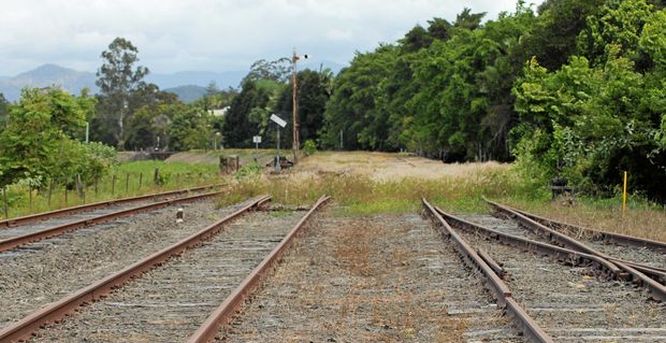

Story by Hamish Broome •
ANYONE WHO thinks the Northern Rivers is getting a light rail system is living in a pipe dream.
We need to face facts about the economic reality of our wonderful region instead of engaging in fantasies.
That way, we won’t miss the attainable opportunities staring us in the face – such as effective use of the Murwillumbah to Casino rail corridor to create what could be one of the best rail trails in the world, bringing millions of good quality tourists to our region – and beyond just Byron Bay.
The Northern Rivers simply does not have the population growth or density to justify a massive rail infrastructure spend.
Yes the region is growing, but growing much more slowly compared to our nation’s capitals.
A recent government report highlighted this.
The Lismore regional economy, which includes Lismore, Byron, Ballina, Kyogle, and the Richmond Valley (but not Tweed) has a population of approximately 150,900.
Its population grew by approximately seven per cent or 10,100 people from 2001 to 2014 which was at a slower rate than both NSW, 15%, and Sydney, at a whopping 18%.
Notably, all this growth was from people aged 50 years and over with Ballina and Byron LGAs respectively accommodating an 4,500 and 5,000 people.
What brings the majority of the people here?
Slowing down, having a treechange or seachange – people in the middle to latter stages of their career or already in retirement.
For every young family that comes to this region, another young family leaves.
The economic lure of the cities is too great – whether by necessity or choice.
On this exact note, a series of reports in The Australian this week is drawing a clear picture of the stark contrast between the economic fortunes of Sydney and Melbourne versus regional Australia.
Sydney and Melbourne are now responsible for the largest share of Australia’s economic growth in history, and this continues to grow.
They are also responsible for the lion’s share of population growth. By 2050, Melbourne will have 80% of Victoria’s population – even in a state with many regional centres such as Geelong, Ballarat, and Bendigo.
Because the proportion of the population living in regional areas is falling, our relative voting power in Canberra is falling.
That’s why all the big infrastructure projects with the exception of the Pacific Highway upgrade (which helps the whole East Coast), and inland rail, which will undoubtedly benefit the Northern Rivers hinterland areas, are in the three East Coast capitals.
The only way to thrive in this environment is to play to your strengths – and take the case to government that certain local infrastructure projects are key to ensuring a viable future.
Public transport is a great thing. But sadly such infrastructure will only be achieve a worthy cost benefit return if the population is big enough.
And we just don’t have the population for a light rail or regular train.
Don’t get me wrong – I’m not negative about the Northern Rivers. This region has so much to offer and we are in a relatively fortunate position compared to other regions.
And if Australia continues down the Sydney-Melbourne centric path, our nation will be poorer for it.
But we must play to our strengths if we want to thrive and prosper.
That’s why a rail trail is the best current use of the rail corridor – and it’s sadly an opportunity wasted not to take it with both hands.
A rail trail will be a foundation stone in this region’s tourism industry which will be a launch pad for so many other small business opportunities – which in turn will bring jobs.
It will put this region on the map for national and international tourists beyond what Byron Bay offers alone.
People need to get real about the rail corridor – a train is not coming back anytime soon.
All credit to the Byron Bay Railroad Company for their little Sunrise to Byron initiative, but that pales in comparison to what a rail trail, properly marketed would do for this region.
A recent economic report by the NSW Government identified the Lismore Regional Economy’s best focus industries was on accommodation (the biggest tourism earner), agriculture, and higher education (mainly thanks to Southern Cross University).
While key employers such as retail, health, and school education are vital and important sectors in the Lismore Regional Economy, they exist primarily to service the local population.
Tourism, agriculture, and Southern Cross University are exporters. They compete on a global scale. The money that flows back through then from out of the region is reinvested in the local economy.
But while tourism is important to coastal areas, it’s yet to penetrate the hinterland on a large scale beyond Bangalow, with the exception of Nimbin.
That’s another reason why a rail trail is such a great idea – it would bring tourists regularly, all the way west to Australia’s beef capital Casino, as well as passing through everywhere in between.
That’s why this region needs to come together and get real about the opportunity that is on the table, and not be distracted by what-ifs.